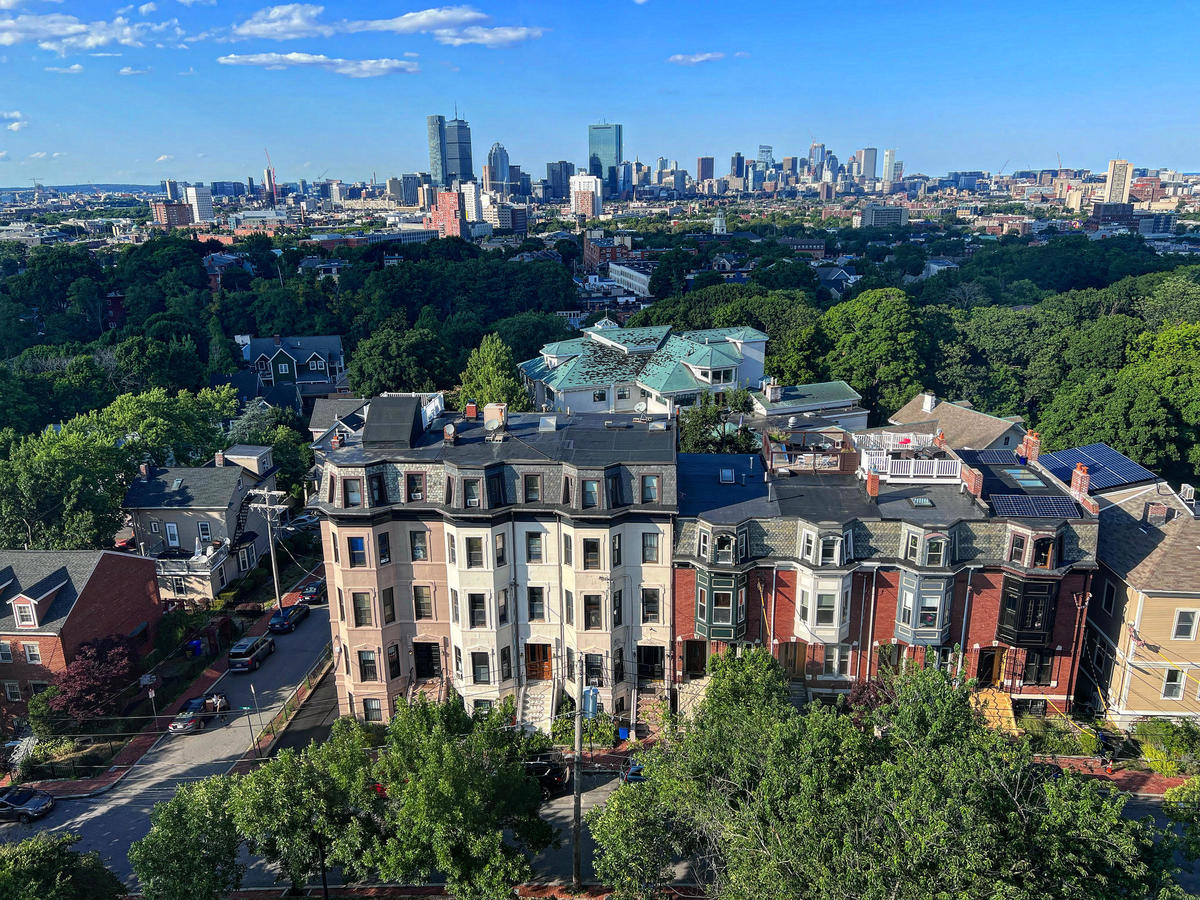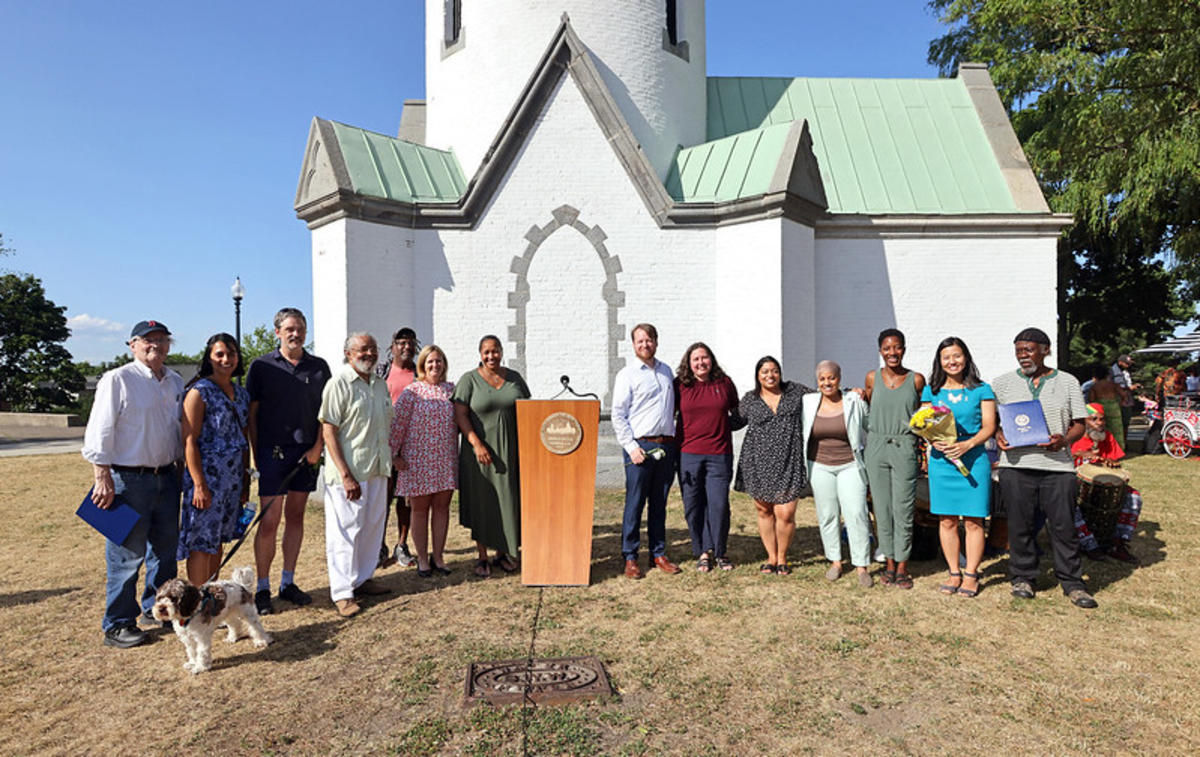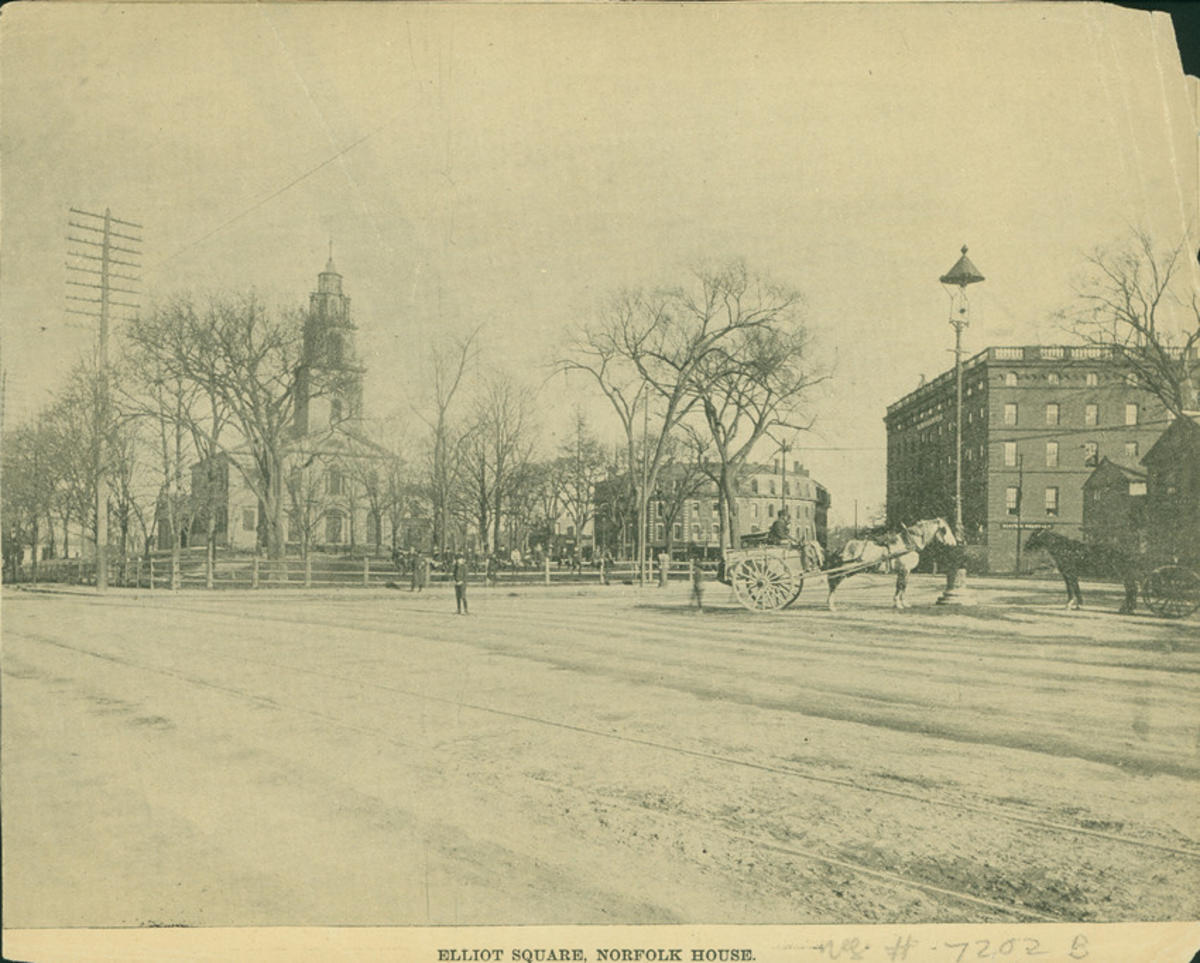Highland Park is Boston’s newest Architectural Conservation District
After receiving approval from the Boston Landmarks Commission, Mayor Wu, and the City Council, the Highland Park neighborhood of Roxbury became Boston’s newest Architectural Conservation District on June 29, 2022! The purpose of Architectural Conservation District designation is to empower members of the Highland Park community to have a voice in shaping their neighborhood, and to protect and enhance the unique heritage of the Highland Park neighborhood.
44 Years in the Making
The petition to designate Highland Park as an Architectural Conservation District was first submitted to the Boston Landmarks Commission in 1978. At the time, the idea of designation lacked wider support from the neighborhood, so the designation effort stalled. Interest was rekindled periodically over the following decades. In 2018, after several years of outreach in the neighborhood culminating in a signature drive that showed significant support for the Architectural Conservation District, a group of neighborhood supporters from the Highland Park Neighborhood Coalition Preservation Committee reinitiated the petition request to the BLC. A Study Committee was formed of 6 neighborhood residents and 5 Landmarks Commissioners. Remarkably, one of the original signers of the 1978 petition, Ernest (Randy) Coston, was a member of the Study Committee that finally completed the designation effort 44 years later!
Reaching Out to the Community
In addition to reviewing, revising, and augmenting the study report on Highland Park produced by a consultant, the Study Committee also took on the important task of community outreach. The Committee made it a priority to reach as many Highland Park residents as possible, including those who may not have access to the internet or who speak a language other than English. To that end, in addition to using email and social media, the Committee printed thousands of paper flyers in English, Spanish, Haitian Creole, and Somali and distributed them throughout the neighborhood. Community outreach events were held both virtually using Zoom and in-person in the community (outdoors due to the Covid pandemic).
A Unique District
It was clear that Highland Park would be a unique district when the Study Committee began developing the guidelines and they decided to throw out the template based on standards from Boston’s other districts. The Study Committee wanted to start with a blank slate and write entirely custom guidelines. They wanted to avoid strict regulations that could be financially burdensome for a community of mixed income levels. They also wanted to acknowledge that change was a part of Highland Park’s history, and that the guidelines should allow for some degree of flexibility. After careful deliberations, the Study Committee generated a set of guidelines they felt were right for the District. The draft study report was posted publicly in February 2022, commencing a 60-day period for public review and comment before a public hearing. After public feedback was reviewed, the study report was revised and reposted for a second public hearing. Hearing the strong support expressed by members of the community, the Boston Landmarks Commission voted unanimously in favor of the District on May 10, 2022. The designation also received enthusiastic support from Mayor Wu and the City Council, receiving full approval on June 29, 2022.
About Highland Park
The Highland Park neighborhood is also known as Fort Hill or the Roxbury Highlands. The District is historically significant with respect to the social and cultural history of the Native population, the people of Roxbury, the City of Boston, the Commonwealth of Massachusetts, and the United States. Rather than representing a single identity or group, the representatives of many different social groups have produced a rich fabric of many styles of dwelling mixed together with places of worship and some places of business. The past activities of all of these people are clearly identified in the landscapes, buildings, and improvements they shaped: the Native Americans who occupied the area for thousands of years; the early colonial settlers; and later immigrants from across Europe and more recently from Africa, Central America, the Caribbean, and other places.
The Highland Park ACD is also architecturally significant as a collection of styles and building types that demonstrate the development of Roxbury from an agricultural settlement to a fashionable nineteenth-century streetcar suburb of Boston, and finally a dense urban neighborhood. The buildings in the district span over 250 years and provide a nearly comprehensive cross-section of architectural styles and types found in Boston.
Some historic highlights:
- Boston, including Roxbury, is the traditional homeland of the Massachusett people, who are still here. Native people have been in the area for at least 12,500 years. The Highland Park area was a cultural and transportation hub for the Massachusett people.
- In 1630, members of the Massachusetts Bay Company settled Roxbury in the vicinity of what would later become known as John Eliot Square, establishing small farms in the hilly but fertile highlands.
- Roxbury was of strategic importance in the American Revolution. During the Siege of Boston (1775–1776), the two forts in the Roxbury Highlands were critical to the defeat of the British, who had occupied Boston.
- In the nineteenth century, development in Highland Park accelerated as the development of mass transit increased the connection to downtown Boston. The neighborhood began to transform into a fashionable suburb.
- In 1864, the prominent abolitionist and newspaper publisher William Lloyd Garrison moved to Highland Park, living at 125 Highland Street until his death.
- Highland Park was also home to author Edward Everett Hale. Hale was one of the most prominent Unitarian ministers of the second half of the nineteenth century, and was also a vocal social reformer, advocating for Irish famine relief, fairness to Native Americans, and educational opportunities for formerly enslaved persons.
- Highland Park was also home to early philanthropic ventures in institutions like the Roxbury Alms House, St. Luke’s Convalescent Home, the Norfolk Settlement House, and many others.
- In the late nineteenth century, a large number of immigrants moved to the area from Ireland, Germany, Italy, Latvia, and Scandinavian countries, as well as the Maritime provinces of Canada. Many were drawn to the industrial jobs in Lower Roxbury. From the late nineteenth century through the 1950s, Roxbury was also home to a large Jewish community that extended southward to Mattapan.
- The mid-twentieth century saw an increase in the Black population as residents migrated to the area from both the American South and the West Indies. Between 1950 and 1960, Roxbury became the center of Boston’s Black community.
- Roxbury’s Latino population also grew in the postwar decades, beginning with the arrival of immigrants from the Dominican Republic in the 1950s, as well as immigration from Puerto Rico in the late 1950s and 60s.
- In the 1960s, Roxbury became a center of grassroots activism and community organizing to combat inequality in housing, education, and employment and systemic discrimination in the form of disinvestment and redlining. At this time, Highland Park saw the emergence of a vital Black community with its own community-fashioned educational establishments like Paige Academy (founded by Dr. Angela Paige Cook and Reverend Joe Cook), as well as mutual aid initiatives like the Highland Park 400 Survival Garden.
- The Roxbury Action Program (RAP), founded by George Morrison and Lloyd King, provided numerous services to the community, including rehabilitating properties for residential and commercial use.
- The renowned filmmaker Henry Hampton owned 88 Lambert Avenue and made substantial contributions to American culture while at the helm of Blackside, Inc., the largest Black-owned film production company of its time. Blackside, Inc. produced more than 65 Civil Rights documentaries, including Hampton’s Peabody and Emmy award-winning series “Eyes on the Prize,” covering the Civil Rights movement from 1954 through to the mid-1980s.
- In 1989, the Highland Park neighborhood was listed in the National Register of Historic Places as the Roxbury Highlands Historic District. Since the district’s listing, it has remained relatively stable, but there have been some notable demolitions.
- Today, Highland Park is a vibrant and diverse neighborhood that residents are proud to call home. Community and civic engagement are highly valued, and Highland Park residents can become involved in community life by joining a network of organizations that are actively engaged in community-building and problem-solving.
- With the new Highland Park Architectural Conservation District (ACD), neighborhood residents can now also serve as Highland Park ACD Commissioners or assist the Commission’s decision-making by providing public feedback!





